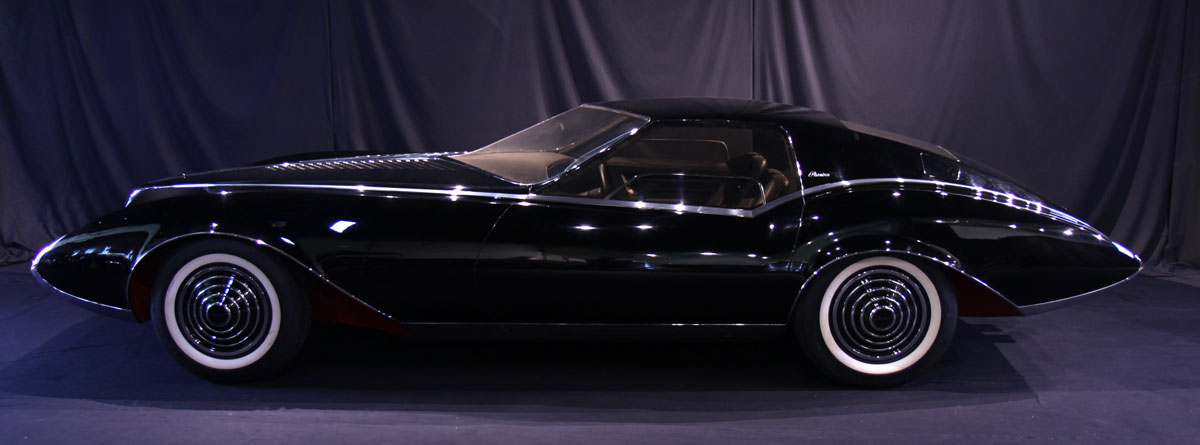
Pontiac Phantom (Madam X)
by Karl Smith
Published on Car Design News, May 12, 2017
William ‘Bill’ Mitchell spent his entire 42-year career at General Motors, much of it served under the leadership of the flamboyant Harley Earl, GM’s Vice President of Design for over three decades. Earl appointed Mitchell as Cadillac’s first design chief in 1936. In 1954 he was promoted to Director of Styling, serving directly under Earl. Finally, after Earl retired, Mitchell stepped into Earl’s place and was Vice President of Design from late 1958 until his own retirement in 1977.
Mitchell, like Earl, was a large presence at GM. He was tall and physically imposing. His personality was equally, if not even more imposing; his exploits – carousing, sophomoric hijinks and profanity-laced tirades – were the stuff of legend, which made him a man feared and reviled by some, but worshipped by others.
But his successes in design were beyond compare. He took the Chevrolet Corvette and turned a quirky roadster into an American icon. He spearheaded a successful program to overtake Ford in the personal luxury car market. His work with the 1955-1957 Chevrolet Bel Air made that car a classic, too.
Unlike Harley Earl, who preferred Rubenesque cars with generous amounts of chrome and ornamentation, Mitchell promoted what he termed a ‘sheer look’, with more tailored forms, and little in the way of visual jewelry.
In 1976, Mitchell was looking ahead and saw his 65th birthday looming in the next year. GM’s mandatory retirement age is 65, so Mitchell decided to create one last concept car, one that he hoped he could literally drive off into the sunset on his last day.
Mitchell recruited Bill Davis, a young designer he had worked with on numerous projects. The mysterious Studio X, Mitchell’s ultra-secret personal design studio was reopened (it was periodically shut down by management) in the styling building’s basement and work began.
Mitchell’s brief was simply stated but difficult to implement—capture the essence of the ‘Mitchell Era’ design philosophy while resurrecting the glamour of the French Carrosserie of the 1930s; the Delahaye, Bugatti, Hispano-Suiza aura combined with Mitchell design cues was the goal. The car would be a personal luxury car, a format that Mitchell perfected in his quest to surpass the Ford Thunderbird in both sales and prestige.
 Davis and a small team set up shop and began designing and modelling on the car that was dubbed ‘Madam X’ – in part because the project had no official ‘XP’ status, in part because of the secret studio that initially housed the project, and finally as a tongue-in-cheek reference to John Singer Sargent’s scandalous portrait of the famous Parisian socialite.
Davis and a small team set up shop and began designing and modelling on the car that was dubbed ‘Madam X’ – in part because the project had no official ‘XP’ status, in part because of the secret studio that initially housed the project, and finally as a tongue-in-cheek reference to John Singer Sargent’s scandalous portrait of the famous Parisian socialite.
Bill Davis was given a free hand in the design, without much interference from Mitchell who acted as the patron and stepped away from the drawing board. Within a few months, a clay model was built, and while Mitchell generally approved of the design, there were some changes necessary. The original clay was a notchback, for example, but Mitchell was fastback man.
The finished full scale model was prepared with a special nitrocellulose black paint that had been used in the 1930s on GM luxury cars. The car was painted double black and polished to a beautiful liquid finish. At the scalloped wheel wells, a special red was used to highlight the sculptural underbody.
The presentation to Mitchell and other management was made in the famous styling dome in an all-black setting with dramatic lighting, accompanied by professional models dressed, naturally, in black gowns, reminiscent of the infamous Madam X. Mitchell was delighted.
Several GM divisions were contacted for sponsorship of the next level of development of the car, and it was Pontiac that bought into the project. A Grand Prix chassis was donated for the finished car, while trusted contractors, including Pininfarina, were asked to submit bids. In the end, only the body shell was built, due to the costs of sculpting the voluptuous body. It also acquired a new name along the way: The Pontiac Phantom.
The final design was a statement about Mitchell, not a look forward to the future of Pontiac. Many noted the mixture of Grand Prix and Firebird styling themes, while others noted the similarity to the V16 project of a decade earlier. Some also noted the influence of the Pontiac Scorpion concept of 1961.
The Phantom featured the long bonnet of the V16 project cars, with the prominent prow flanked by rectangular headlights (Mitchell was not fond of retractable lights).
The long, sweeping lines at the sides recalled both the classic 1930s cars and GM retro designs like the 1971-4 boat-tail Buick Riviera. A curved fastback terminating above quad exhausts completed the composition.
The interior of the car, as well as the drivetrain, were not completed. Mitchell had hoped to present the concept to the Board of Directors to obtain additional funding to complete the project, but was blocked by Howard Kerl, a powerful executive who led the product planning and technical staffs—and Mitchell’s sworn enemy, having endured many a tirade over the years.
The car, technically a possession of Pontiac, was placed in storage to await its date with the crusher, the typical fate of GM concept cars of the day… but a team of designers quietly intervened and negotiated with GM and the Sloan museum in nearby Flint, Michigan, to save the car and put it on display. It remains there today.
As for Mitchell, he retired soon after, with no new concept car to drive home. He was not without transportation however, as he adopted over 50 GM vehicles—concepts, special editions and personal customs for his own collection. Mitchell launched his own design consultancy and ran it for almost a decade, until health issues forced a permanent retirement. He died in 1988.
Enthusiasts’ opinions differ on Mitchell’s most significant contribution to GM’s automotive legacy. Some say the Corvette, some say his stewardship of Cadillac through four decades, but many point to the personal luxury car as his greatest contribution. Even though he did not invent it, he certainly perfected the format and helped define the romance of a car that promised a great presence on the road, with lots of power and style.
A perfect car for the times—and a challenge to us in a new era of automobiles: can we design an automotive statement that would be its equal?

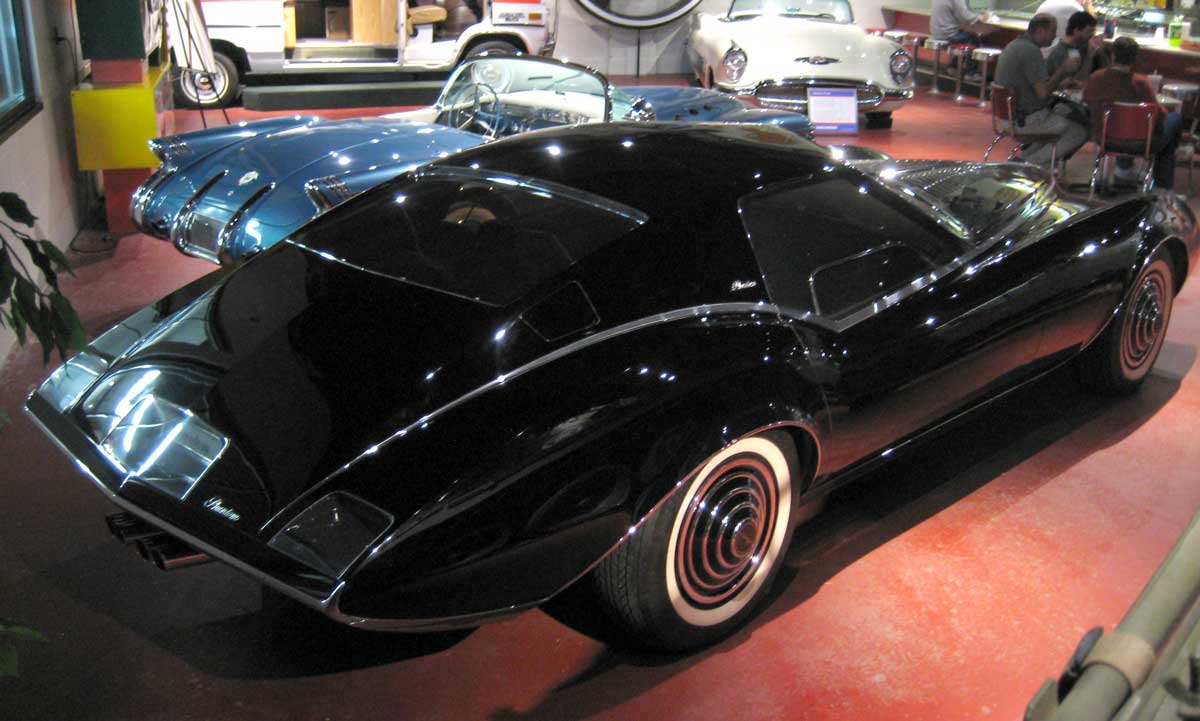
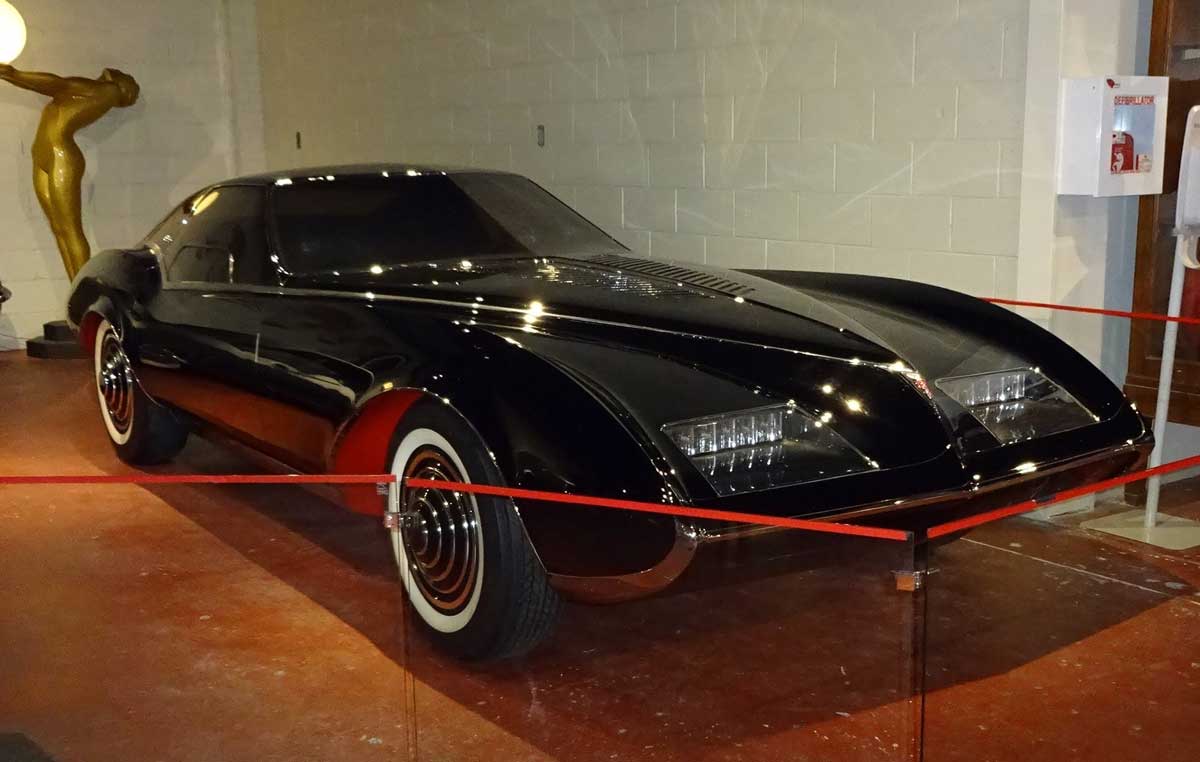
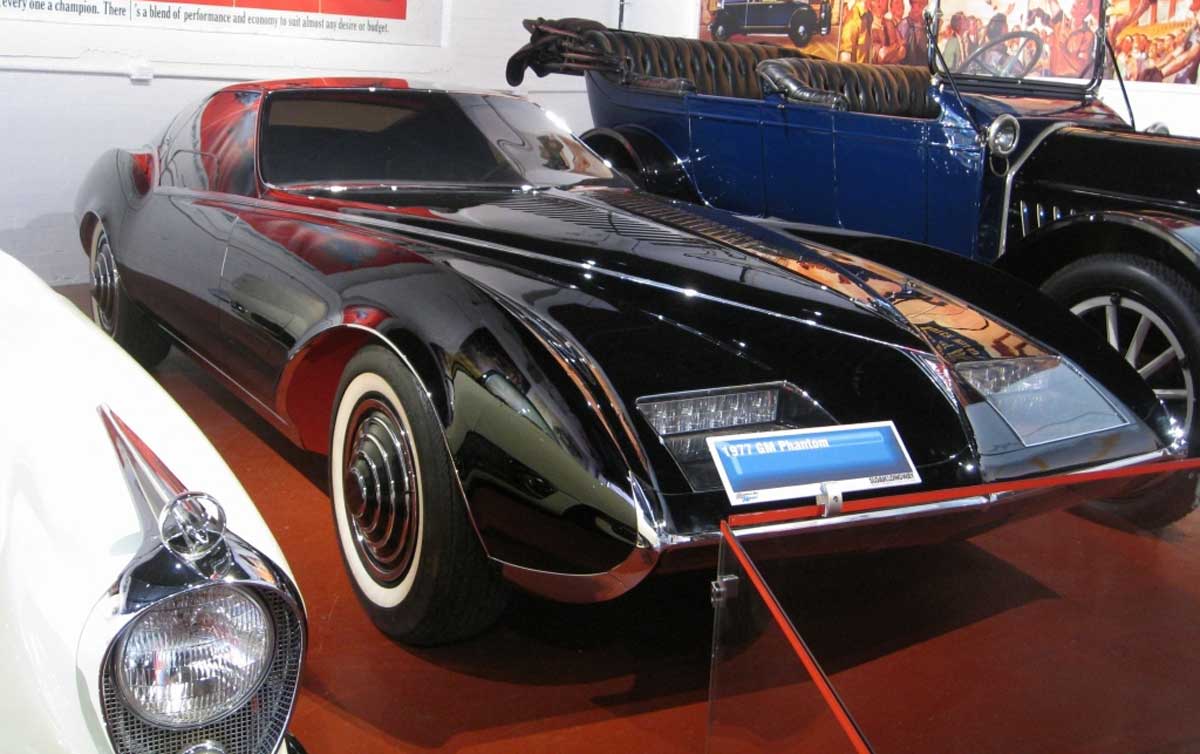
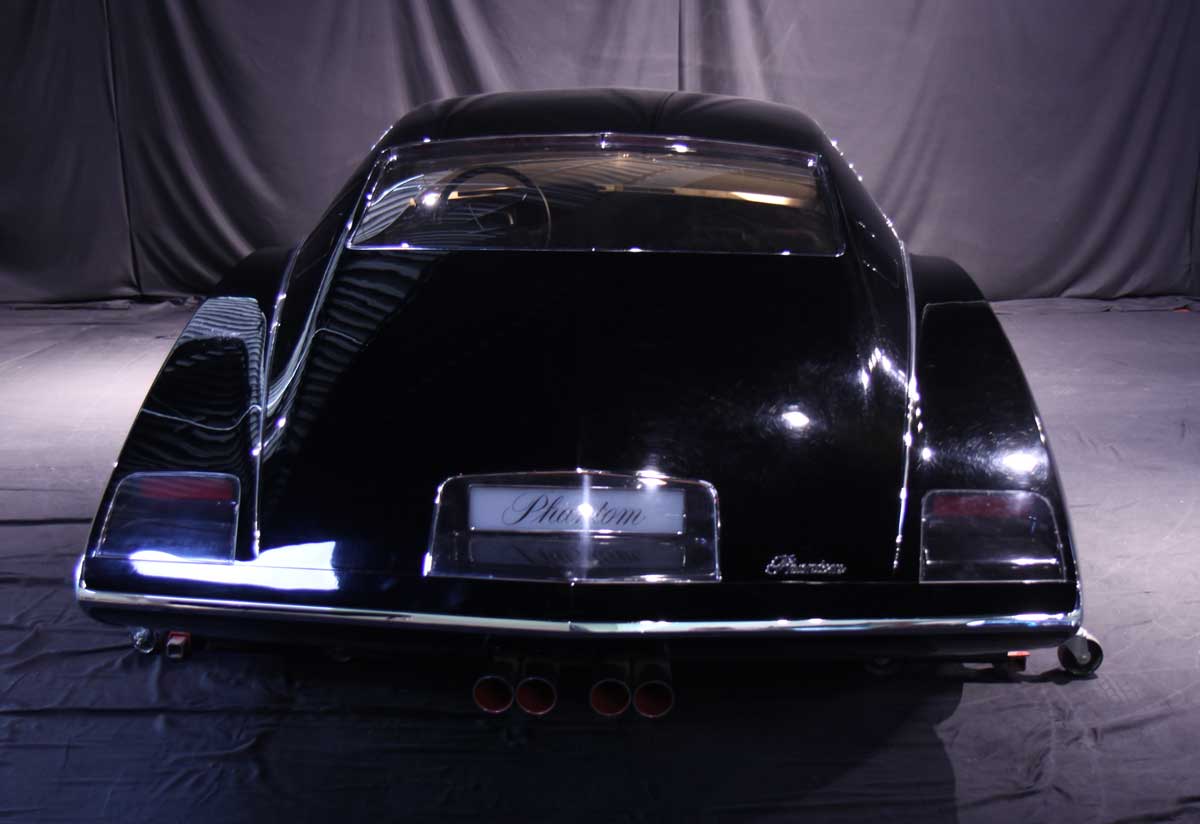
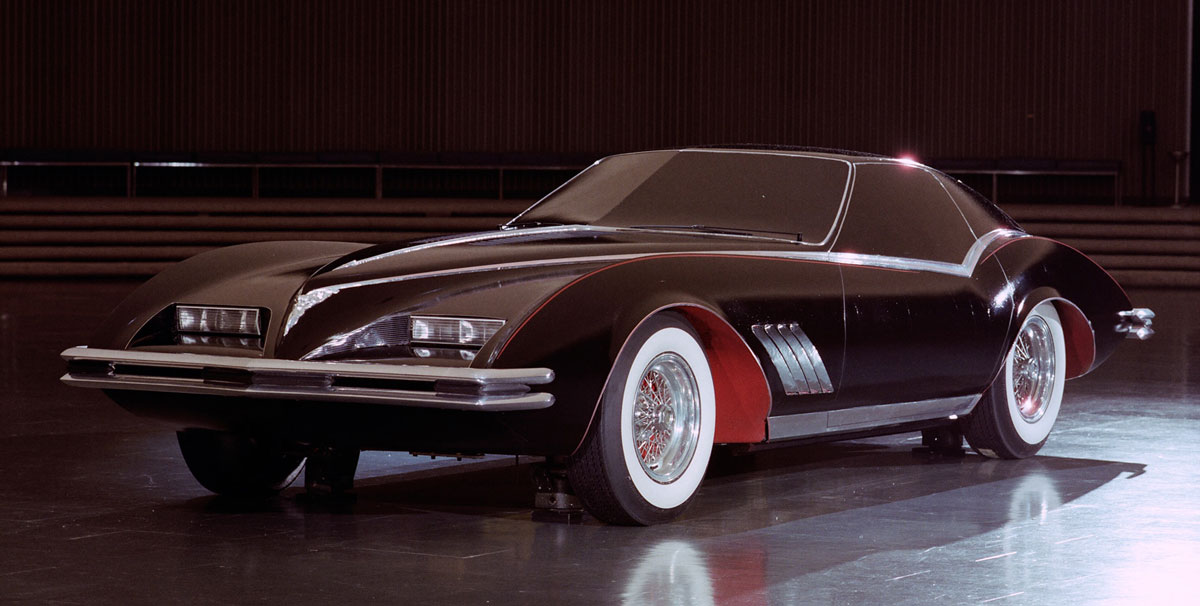
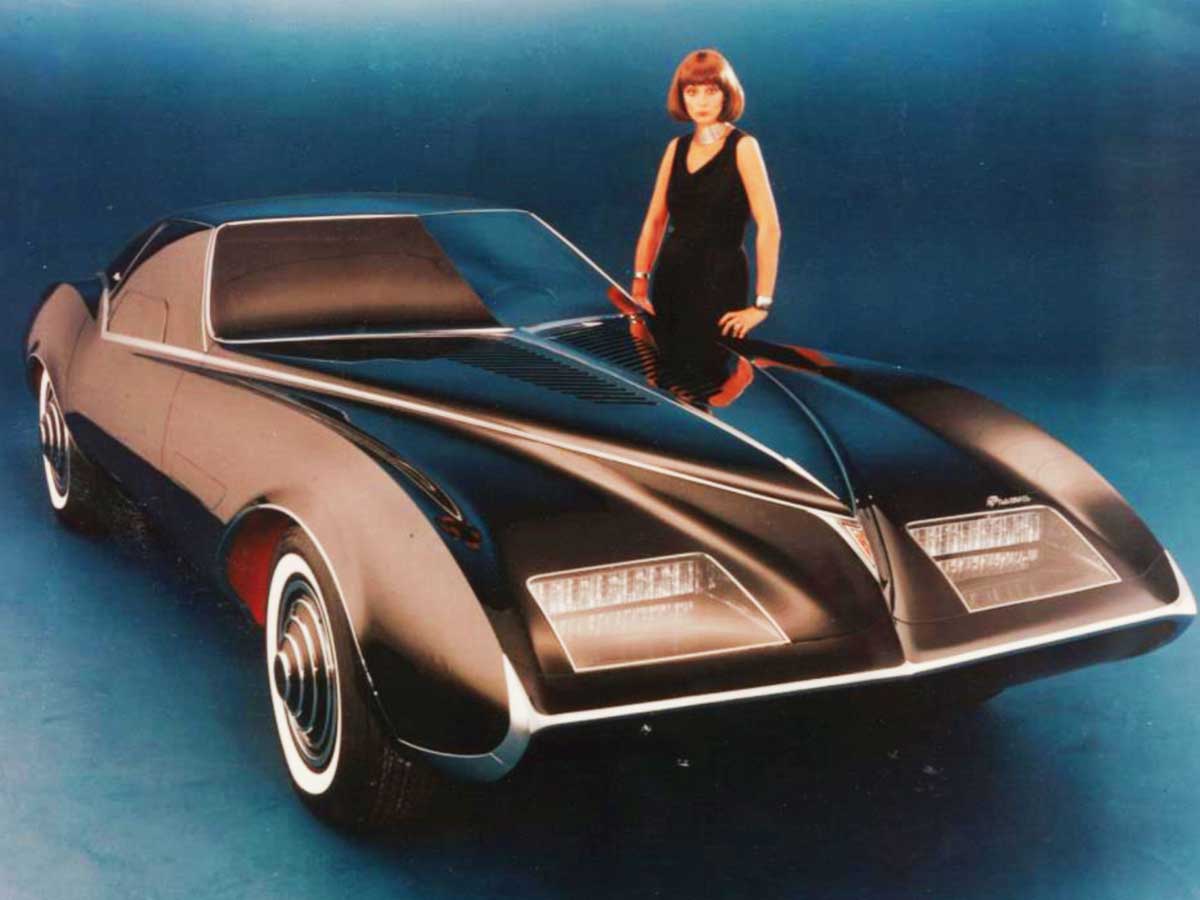
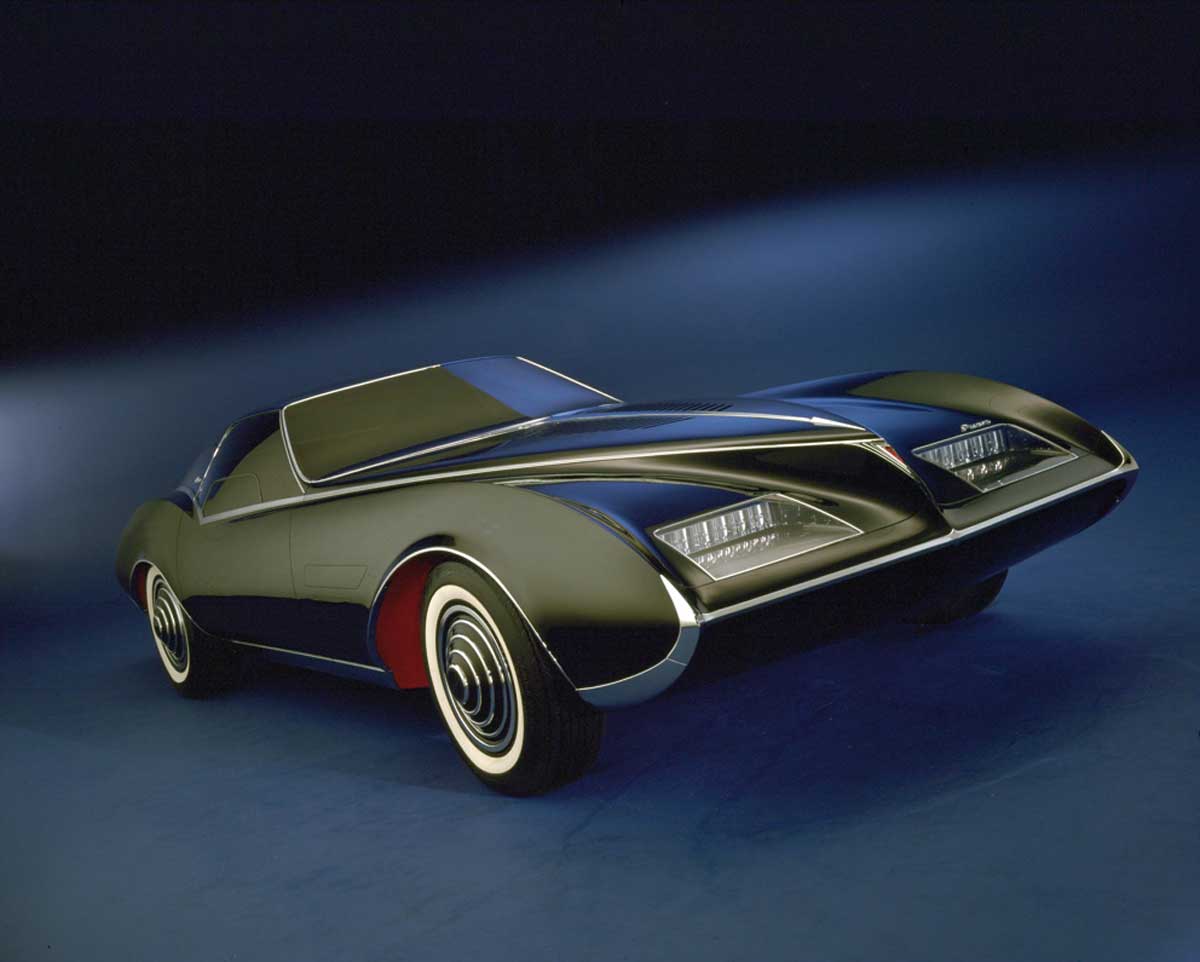

I remember this design so well because I was asked by Mitchell to write the press release for its reveal. I’m certainly on the side that loves it as a striking expression of fine design.
The man who was so negative was Howard Kehrl. As fate would have it he became the technical and design guru to hapless GM chief Roger Smith, who was clueless about cars and should never have been elevated to that position. Kehrl was behind the elaboration of GM’s operating structure that devastated the GM divisional system that had worked so brilliantly for decades.
It’s criminal that the Phantom was never made a running car.
In 1930’s, Madame X was also the name for a Cadillac’s special serie. For the drivetrain, I’ve read in a book that Bill Mitchell relied on a future FWD Cadillac Eldorado’s powertrain.
“He was not without transportation however, as he adopted over 50 GM vehicles—concepts, special editions and personal customs for his own collection.”
Out of curiosity, does anyone know which vehicles he took with him, and where they might be now? Would also love to know more about his post-GM design company, too.
Thanks for presenting this unfulfilled concept car. Bill Mitchell’s stunningly beautiful and visually exciting Phantom shares a similar fate as the later Bob Lutz inspired Chrysler Atlantic. Both should have seen production. At least we still have them to enjoy as what might have beens. Bill Davis did a great job designing the Phantom as did Bob Hubbach with the Atlantic. Fate sometimes deals an unfortunate cruel hand… The car really deserves a great walk around photo shoot at a breathtaking setting to showcase its design!
John M. Mellberg
Automotive Designer (Ret’d.)
The Chrysler Atlantic had a straight 8 cylinder engine combined from two 4 cylinder engines. I am not sure if it was a runner.
We would have bought this instead of those trans ams what a beautiful automobile
Like his predecessor Harley Earl, Bill Mitchell wanted to design and build a special running personal car for himself as a retirement gift from GM. The project was initially called “Madam-X” because he wanted reference to the famous Cadillac V-16 showcar of the 1930s. His plan was to use two V-8 engines bolted together to achieve a V-16. Originally planned for a C-body Cadillac chassis, the name was later changed to “Phantom” when Cadillac reneged on providing the chassis, and Pontiac agreed to fund the project.
In 1976 he resurrected his original Studio-X in the basement for one last project and assigned Bill Davis as his designer to create a vehicle that epitomized everything that was Bill Mitchell. It needed to capture his design philosophy of excitement, originality, power, elegance, extreme proportion, flowing lines, shear surfaces, and innovative features. The only design requirement was that it capture the glory days of the French custom body studios (Carrossiers) during the 1930s, He wanted a neo-classic piece of art, but expressed in a contemporary way.
This car was intended to represent his own design aesthetic. He was the patron. It was his personal dream car.
Excerpt from the book “Maestro: Bill Mitchell”.
Fantastic car and it immediately reminded me of my ’71 boat tail Rvivera. Maybe one of the one off manufacturers could replicate it? Beautiful and I would love to own one.
Karl Ludvigsen, I will name the phrase ‘hapless GM chief Roger Smith’ as an instance of jewel-like understatement….
With the Four Fendered Farkle and the Phantom Bill Mitchell was inventing
RETRO. Totally missed by the writer after many years along with all of us at Design at the time. He should have gotten it by now.
It is almost always comical to see journalists write about design. Especially rediculous here is the pedestrian comparison of a piece of this car here and another piece there. This as fill in for lack of knowledge and fear of exposing ignorance about the subject. At least he did not use the word “Penned”.
Whether you agreed with it or not it was a stunner and would have been sensational as a running car even today. The total concept, the name, a Cadillac V12 engine and the look would be very dynamic. If it had stayed a Cadillac he and Bill Davis would have moved it more in that direction. Of course with his history he would want a Cadillac.
Bill Mitchell was NOT an imposing figure physically like Harley Earl but he made up for it in many ways. He was normally cool and collected in a Saville Row suit but when he turned red everyone knew he was goingto blow! He had impeccable taste that had a wide spectrum, but most of all he was very smart and played the corporate game better than anyone on the 14th floor of the GM Building. For that he had to be punished. Thus the the lack of support for the Phantom as well as the choice for his successor.
He was very powerful at General Motors and a great designer as we all knew. He swung many vanilla cars to greatness, an example is the first Toronado. You had fear when he looked at something that you had worked on, not fear that he would throw it out but fear that with a single stroke he would make it better than you could. Like going in to see a great teacher you knew it would be tough but you also knew that when you came out you would be the better for it.
He was also a great communicator. Once while bringing some engineers from Australia through the Preliminary Design Studio where we were working on a four door version of the earlier GMX he stopped on the way out and commented, “That looks like something that you would pull out of a lake with a hook”! We got the message, end of design.
Dick Ruzzin
I should have started with the following:
When Bill Mitchell proposed the Madam X to GM corporate management they should have stood up and cheered! That statement based on what he contributed to GM during his career as a designer.
Dick Ruzzin
One more thing, it is important.
The Phantom was a demonstration of designing a car that was very untypical. Not one for the future which is always what we aimed it, but one that would encompass a broad panorama of time, past present and future. No one had ever done that before.
Now we are in the future, we can look back and see it as a representation of a skillfully executed and cohesive statement that represents not a single time in the past but many times.
DICK RUZZIN
The author stated he also had a hand in the 1955,56,57 Chevrolet. All of the article on these cars I never read of his involvement. Wasn’t he working at Ford and Earl at least when the 55 was done?